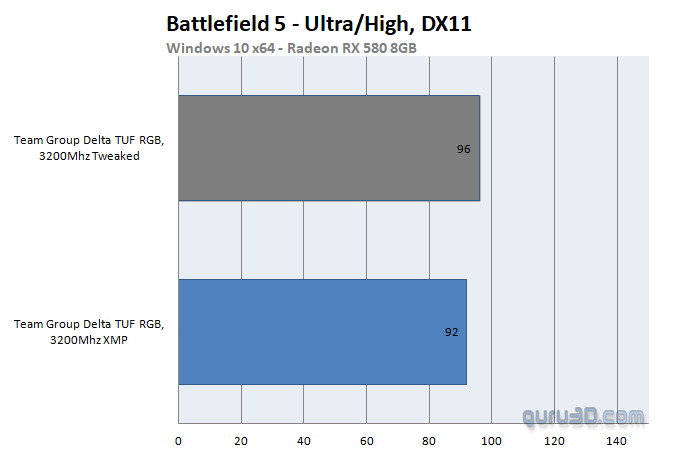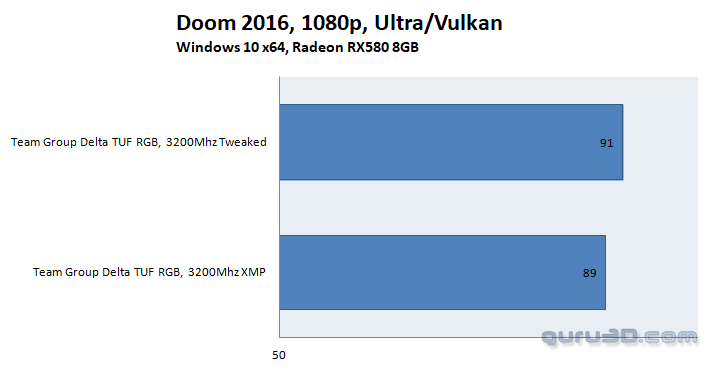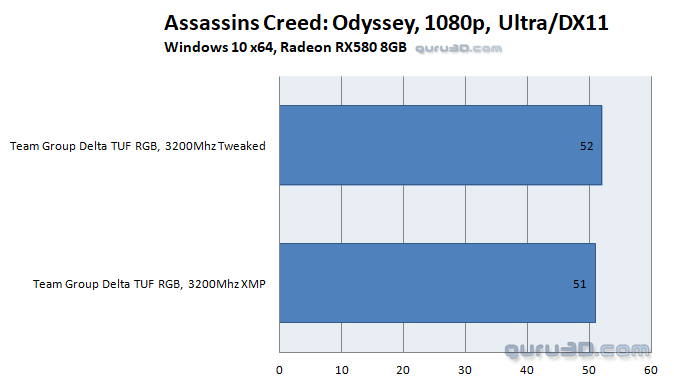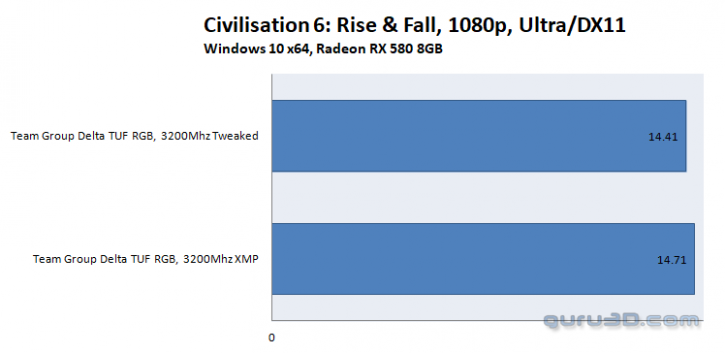Game Benchmarks
Here, and as our finale, we test the memory both at stock and overclocked/tweaked in a variety of titles at 1080p (in order to push as much work onto the CPU and, where applicable, memory). Results here were minor, but still potentially tangible. I'll save the best for last, as well. Here we have only included average frame rate, which whilst not the best indicator of in-game performance (1% and 0.1% lows and frame times are also important), they're still a good metric.
The first title on our list is a recent one, Battlefield V. Here, 1080p resolution was used and the game was set to a mixture of high/ultra settings. This is something I've been doing a lot, recently, having realised that a combination of upscaling and lower in-game quality settings can actually result in more performance with virtually no loss to visual detail. Frostbite engine games have traditionally performed excellently well on AMD hardware, and this title is no exception. By default, the GPU is running at 1445Mhz core and 2200Mhz memory, with reduced operating voltages in order to tame the RX580's somewhat over-enthusiastic voltage draw. On average, we saw 92 FPS with the memory at default settings, and 96 FPS with tightened timings. Could I tell the difference? No, but its still nice to have.
Civilisation 6: Rise & Fall is a surprisingly CPU heavy title that includes two different benchmarks, a GPU bound one and an AI/turn time one. The latter, especially for the potentially slow late game, is a very good indicator of heavy stress late game play. There was, to be fair, no perceptible difference between the two runs, with the XMP stock profile returning 14.71s and the manually tweaked settings returning a 0.3s drop in average turn time. Again, worth the effort? No, but then again if I said that for each time it wasn't, people wouldn't overclock. Besides, we have seen plenty of instances where tangible gains were had.
Doom, for its entirety, is a GPU bound title that'll practically play on any CPU with 4 cores that aren't utter garbage. Hence, on a 1700X and 580 system running the Vulkan API, gameplay in Doom 2016 is incredibly smooth. Stock XMP settings returned an 89 FPS average, whereas manually tweaked memory returned 91 FPS. Not a huge difference at all, but I did note that gameplay was notably smoother, with a more steady average framerate and fewer dips into lower frame rate ranges.
My suspicions regarding memory tweaking being of great benefit to some titles was basically confirmed when I fired up the most recent entry into Assassins Creed franchise. It's a tough game to run for mid-range AMD hardware, and mid-range hardware in general. However, seeing the benchmark run go through using tweaked timings made me think 'Hmm, this is definitely smoother.' Default XMP returned a 51 FPS average, with 22 for the min. framerate and 73 for the max. Tweaked timings only saw 1 extra frame gained for the average, and we lost 4 from the max (which, luckily, really doesn't matter). However, frame time graphs from the benchmark run told me all I needed to know. The tweaked RAM had helped smooth out much of the occasional stutter or slight hitch in the previous run.





